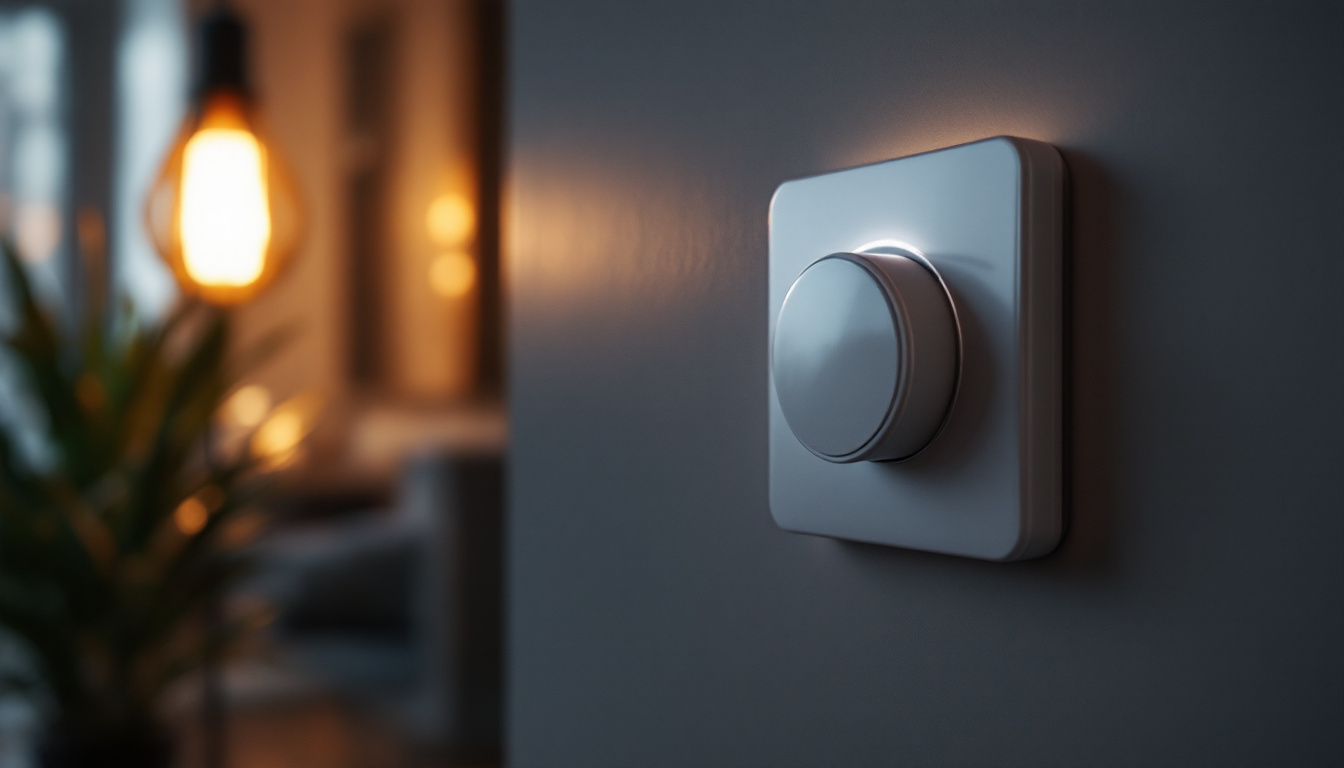
In the ever-evolving world of lighting design and installation, digital timer switches have emerged as a vital tool for enhancing efficiency and convenience. While many lighting contractors are familiar with the basic functionalities of these devices, there are several nuances and advanced features that are often overlooked. This article delves into the critical aspects of digital timer switches that can significantly impact project outcomes and client satisfaction.
Digital timer switches are programmable devices that allow users to control lighting systems based on specific schedules. Unlike traditional mechanical timers, these digital counterparts offer a wide range of functionalities that can be tailored to meet various needs. They can be set to turn lights on and off at predetermined times, providing both energy savings and enhanced security.
When selecting a digital timer switch, it is essential to consider the features that can enhance usability. Common features include:
Understanding these features not only aids in selecting the right timer for a project but also empowers contractors to educate their clients on the benefits of upgrading their lighting systems. Furthermore, the ability to customize settings means that users can create a tailored environment that suits their lifestyle, whether it’s for automated lighting during evening hours or timed illumination for early morning routines.
Proper installation is crucial for the effective operation of digital timer switches. Contractors must ensure that they follow the manufacturer’s guidelines closely. This includes understanding the electrical load requirements and ensuring that the timer switch is compatible with the lighting fixtures in use.
Additionally, it is vital to consider the placement of the timer switch. Ideally, it should be installed in a location that is easily accessible for programming and adjustments. This consideration enhances user experience and encourages clients to utilize the timer’s full potential. Moreover, installers should also assess the surrounding environment; for instance, if the timer switch is placed near a window, it may be beneficial to consider how natural light affects the need for artificial lighting, potentially optimizing energy usage even further.
Another important aspect to keep in mind during installation is the potential for future upgrades. As technology evolves, users may want to integrate their timer switches with newer smart home devices or systems. Therefore, selecting a model that offers firmware updates or additional compatibility options can ensure longevity and adaptability in an ever-changing technological landscape. This foresight not only enhances the functionality of the lighting system but also provides peace of mind for homeowners who are looking to invest in their property’s infrastructure.
Despite their growing popularity, there are several misconceptions surrounding digital timer switches that can lead to missed opportunities for lighting contractors.
One of the most prevalent myths is that digital timer switches are overly complex for the average homeowner. While it is true that these devices come with various features, many models are designed with user-friendliness in mind. Contractors can play a pivotal role in demystifying these devices by providing clear instructions and demonstrations during the installation process.
Moreover, many manufacturers offer user-friendly interfaces and mobile apps that simplify programming. Highlighting these aspects can alleviate client concerns and encourage them to embrace technology.
Another misconception is that digital timer switches are only beneficial for outdoor lighting applications. While they are indeed popular for controlling landscape lighting, their utility extends far beyond that. Indoor lighting systems, such as hallway lights, living room fixtures, and even holiday decorations, can greatly benefit from the automation provided by digital timers.
By educating clients on the versatility of these devices, contractors can enhance the overall value of their lighting projects and encourage more comprehensive installations.
One of the most compelling reasons to incorporate digital timer switches into lighting systems is the potential for energy efficiency and cost savings. These devices allow for precise control over lighting schedules, ensuring that lights are only used when necessary.
By programming lights to turn off during daylight hours or when spaces are unoccupied, homeowners can significantly reduce their energy consumption. This not only leads to lower utility bills but also contributes to a more sustainable lifestyle.
Contractors should emphasize these benefits to clients, as many are increasingly conscious of their environmental impact. Highlighting energy savings can also serve as a selling point for projects, making them more appealing to eco-conscious consumers.
While the initial investment in digital timer switches may be higher than traditional timers, the long-term financial benefits are undeniable. Clients can expect to see a return on investment through reduced energy costs and extended lifespan of lighting fixtures, as bulbs are not left on unnecessarily.
When presenting options to clients, contractors should include a cost-benefit analysis that outlines potential savings over time. This transparency can help clients make informed decisions and feel more confident in their investment.
As technology continues to advance, digital timer switches are becoming increasingly sophisticated. Understanding these advanced features can help contractors recommend the best options for their clients.
Many modern digital timer switches can seamlessly integrate with home automation systems. This integration allows homeowners to control their lighting alongside other smart devices, such as thermostats and security systems. For contractors, this presents an opportunity to offer comprehensive solutions that enhance the overall functionality of a home.
By leveraging these integrations, contractors can position themselves as knowledgeable professionals who understand the latest trends in home automation. This expertise can lead to increased client trust and more referrals in the future.
Another advanced feature is the ability to control lighting remotely. Many digital timer switches now come with mobile apps that allow users to adjust lighting schedules from anywhere. This feature is particularly appealing to clients who travel frequently or have second homes.
Educating clients about the convenience of remote access can enhance their overall experience and encourage them to utilize their lighting systems more effectively. Contractors should demonstrate how to use these apps during installation, ensuring clients feel comfortable with the technology.
To maximize the benefits of digital timer switches, contractors should adhere to best practices during installation. These practices not only ensure optimal performance but also enhance client satisfaction.
Before installation, it is crucial to conduct a thorough assessment of the client’s needs and preferences. Understanding their lifestyle, lighting habits, and specific requirements will enable contractors to recommend the most suitable timer switch.
Engaging in a detailed discussion with clients can uncover unique needs that may not be immediately apparent. This personalized approach fosters trust and demonstrates a commitment to providing tailored solutions.
Once the installation is complete, providing comprehensive training on how to use the digital timer switch is essential. This training should cover programming schedules, utilizing advanced features, and troubleshooting common issues.
Offering ongoing support can also enhance client satisfaction. Providing contact information for future questions or concerns can reassure clients that they have a reliable resource to turn to.
While digital timer switches offer numerous benefits, contractors may encounter challenges during installation or client education. Identifying these challenges and proposing solutions can enhance the overall experience for both contractors and clients.
Some clients may be hesitant to adopt new technologies, fearing complexity or potential issues. To address this resistance, contractors should emphasize the ease of use and benefits associated with digital timer switches. Providing case studies or testimonials from satisfied clients can also help alleviate concerns.
Occasionally, contractors may face technical issues during the installation process, such as compatibility problems with existing wiring or fixtures. To mitigate these challenges, it is advisable to conduct a thorough pre-installation assessment and maintain open communication with clients about potential issues.
Moreover, staying updated on the latest products and technologies can help contractors troubleshoot effectively and provide solutions promptly.
Digital timer switches represent a significant advancement in lighting control technology, offering numerous benefits for both contractors and clients. By understanding the features, addressing misconceptions, and adhering to best practices, lighting contractors can enhance their service offerings and improve client satisfaction.
Emphasizing energy efficiency, cost savings, and the convenience of advanced functionalities can position contractors as trusted experts in the field. As the demand for smart home solutions continues to grow, embracing digital timer switches will not only elevate project outcomes but also contribute to a more sustainable future.
In a competitive market, the knowledge and expertise surrounding digital timer switches can set contractors apart, leading to increased referrals and long-term client relationships. By staying informed and proactive, lighting contractors can navigate the evolving landscape of lighting technology with confidence.
Ready to take your lighting installations to the next level? LumenWholesale is here to support your journey with our extensive range of high-quality, spec-grade lighting products. Say goodbye to inflated markups and hello to unbeatable wholesale prices that give you the best value for every project. With our commitment to quality, affordability, and convenience, you’ll find everything you need to impress your clients and stay ahead in the competitive world of lighting technology. Don’t miss out on our hassle-free bulk buying options and free shipping. Elevate your lighting solutions today by visiting Wholesale Lighting at the Best Value and discover the LumenWholesale difference.

Discover how solar lamps are revolutionizing the lighting industry for contractors.

Discover essential insights and expert tips for lighting contractors on selecting and installing LED 3-inch recessed lights.

Discover the secrets to thriving in the competitive lighting industry with “Counterlight: Maximizing Success for Lighting Contractors.” This insightful guide offers innovative strategies, expert tips, and practical solutions to elevate your business, enhance client satisfaction, and outshine the competition.

Discover how electrical outlet switches can revolutionize your lighting contracting business.